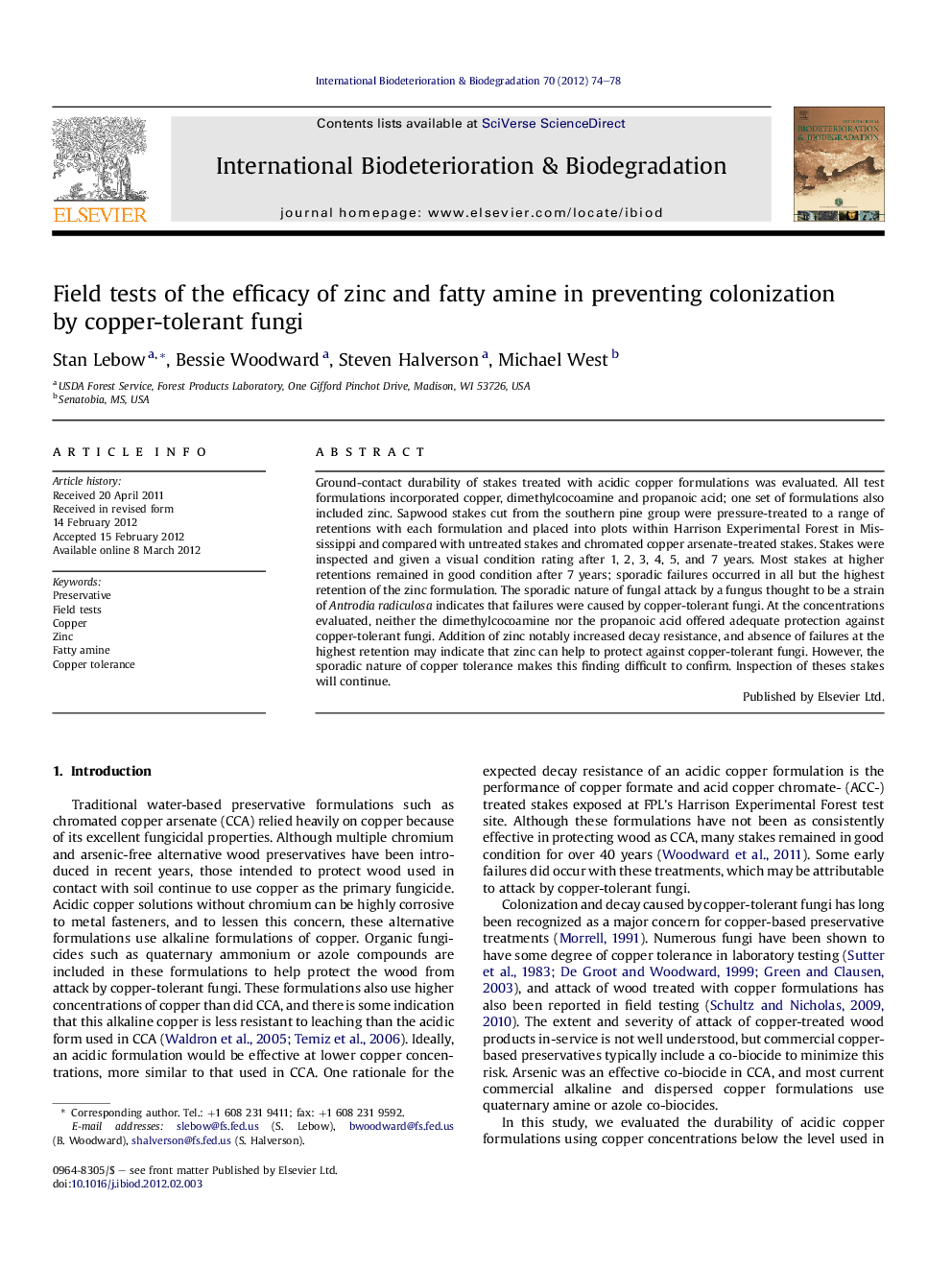| Article ID | Journal | Published Year | Pages | File Type |
|---|---|---|---|---|
| 4365139 | International Biodeterioration & Biodegradation | 2012 | 5 Pages |
Ground-contact durability of stakes treated with acidic copper formulations was evaluated. All test formulations incorporated copper, dimethylcocoamine and propanoic acid; one set of formulations also included zinc. Sapwood stakes cut from the southern pine group were pressure-treated to a range of retentions with each formulation and placed into plots within Harrison Experimental Forest in Mississippi and compared with untreated stakes and chromated copper arsenate-treated stakes. Stakes were inspected and given a visual condition rating after 1, 2, 3, 4, 5, and 7 years. Most stakes at higher retentions remained in good condition after 7 years; sporadic failures occurred in all but the highest retention of the zinc formulation. The sporadic nature of fungal attack by a fungus thought to be a strain of Antrodia radiculosa indicates that failures were caused by copper-tolerant fungi. At the concentrations evaluated, neither the dimethylcocoamine nor the propanoic acid offered adequate protection against copper-tolerant fungi. Addition of zinc notably increased decay resistance, and absence of failures at the highest retention may indicate that zinc can help to protect against copper-tolerant fungi. However, the sporadic nature of copper tolerance makes this finding difficult to confirm. Inspection of theses stakes will continue.
► We evaluated ground-contact durability of stakes treated with acidic copper formulations. ► Sporadic nature of fungal attack indicates that failures were caused by copper-tolerant fungi. ► Dimethylcocoamine nor propanoic acid offers adequate protection against copper-tolerant fungi. ► Addition of zinc notably increased decay resistance. ► Absence of failures at the highest retention may indicate that zinc can help to protect against copper-tolerant fungi.
